NEWS
Get to know yourself and your resources and achieve success!
Maja Wąsała
December 7, 2019
The training which was s part of the ELEVATE project entitled “Get to know yourself and your resources and achieve success!“, was delivered on December 7, 2019 in Lublin. The goal of the training was to help determine the resources and identify the type of personality that each participant presents.
Through mini-lectures and group interactions we were recognizing individual communication styles and team work styles and determining the environment in which participants’ potential should be developed to achieve professional and life goals. The result was also an understanding of experiences in which failures or unrealized goals occur.
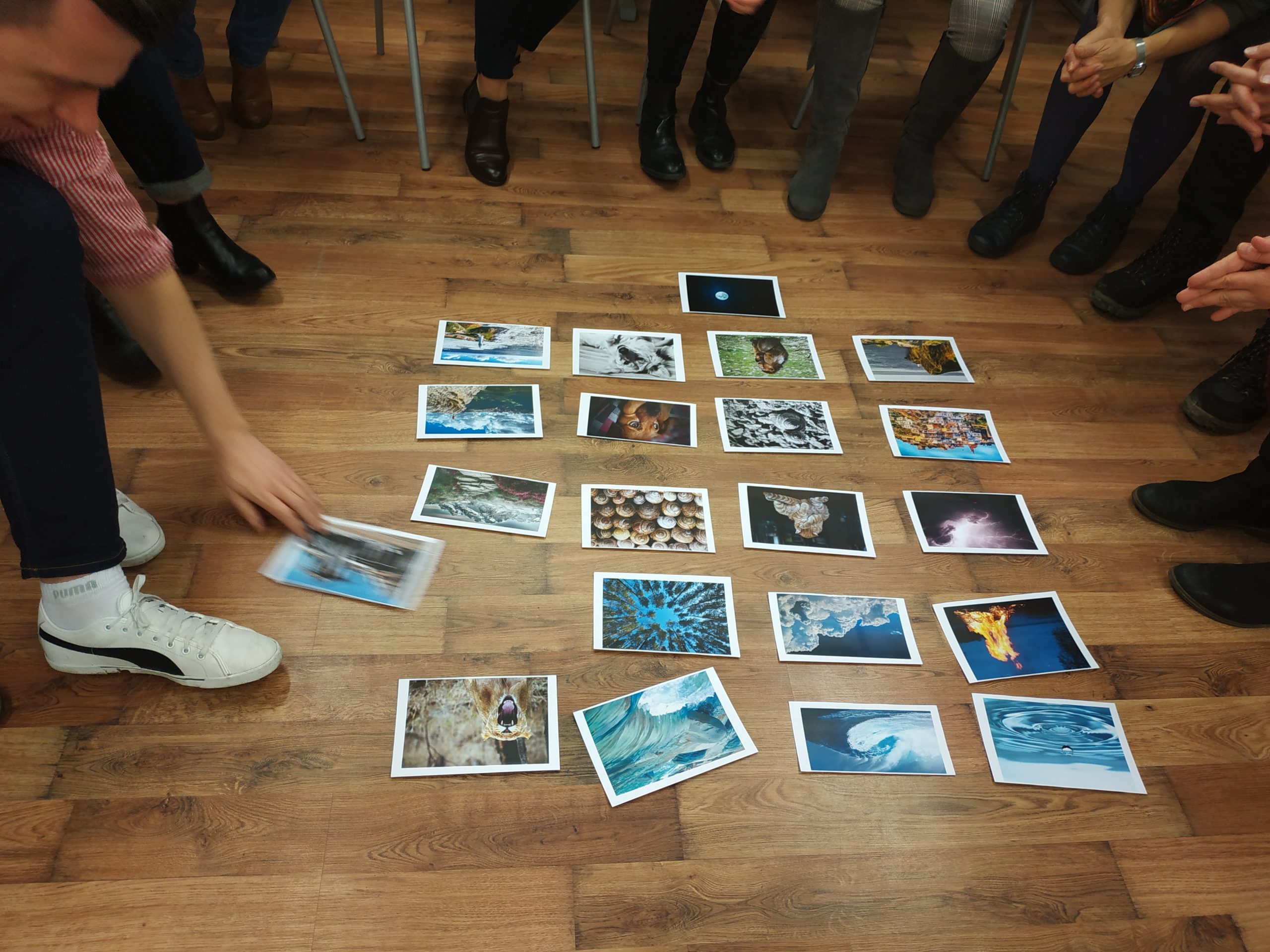
One of the first exercises we offered to participants was to choose a photo that attracted their attention among many others. This very simple exercise turned out to be a huge source of knowledge about each of the people gathered during the training. Why do some of us prefer to look at the clouds while others cling to high peaks? What does the photo that you unconsciously choose say about you?
1. THE POWER OF INTUITION.
One of the first exercises we proposed to participants was to surrender to the wave of associations, and more specifically, to choose a photo that attracted their attention among many others. This very simple exercise turned out to be a huge source of knowledge about each of the people gathered during the training. The instruction was “THIS PICTURE IS ME”. Each participant chose from a number of photos the one that attracted his attention first.
As always, the simpler the better. Why do some of us prefer to look at the clouds while others cling to high peaks? What does the photo say about you in which there is a large iced, richly decorated cake?
Of course, analyzing this photo requires some courage.
Because sometimes there is our own judgement behind the associations, which we do not like. That is why we asked the participants to keep information about what they embody photos, keep to themselves and listen to the first words-associations from people in subgroups. What are our associations talking about? Here are some examples:
Cake – sabers, pleasure, celebration, luxury.
Kittens – delicacy, innocence, fun.
Fire – strength, passion, courage.
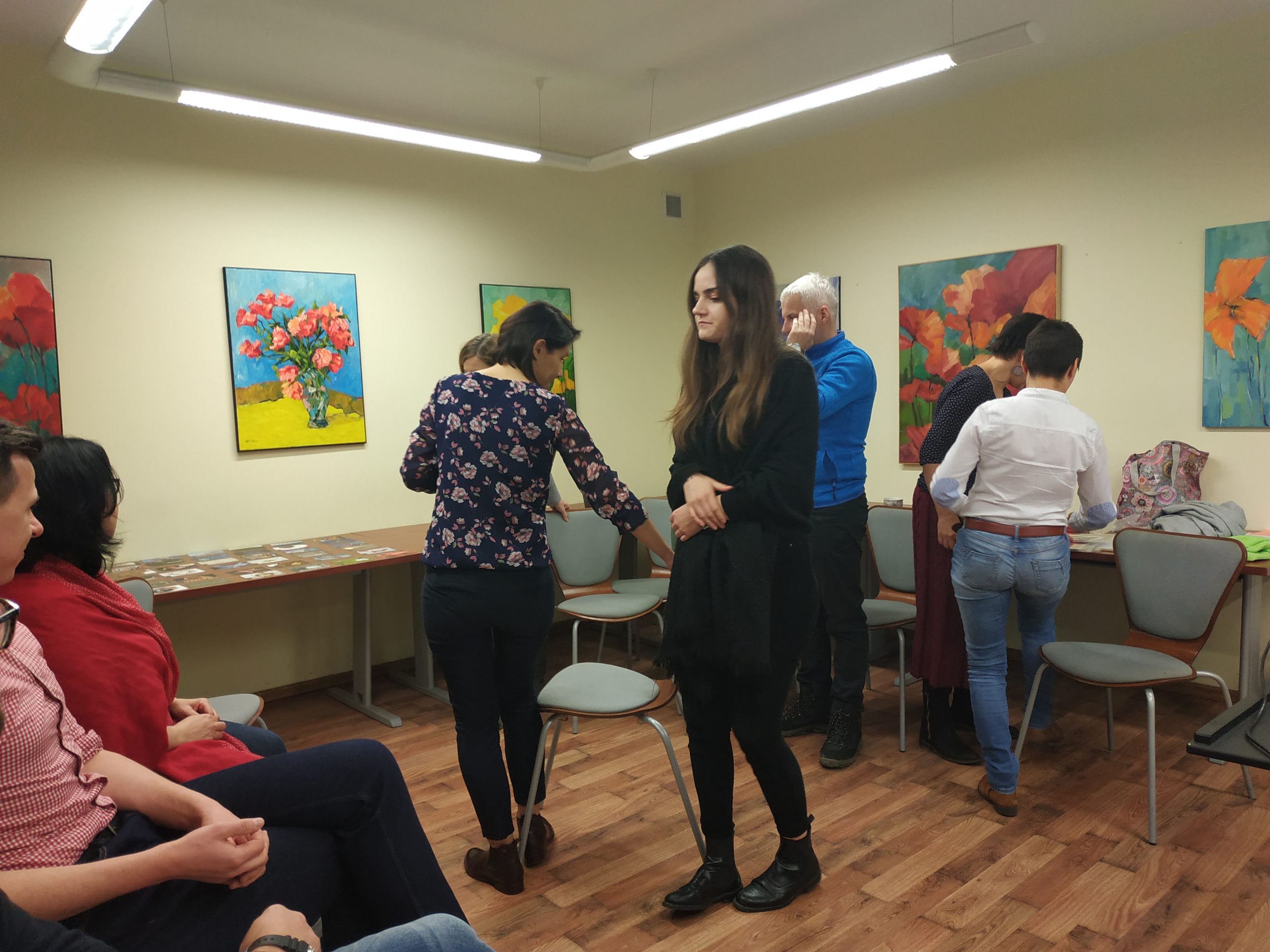
Photo by Monika Grzesiak-Chmura
We started the middle part of the training from movement, in which through intuition and attraction you could define your basic style of communication.
2. MOVEMENT and ATTRIBUTES in finding your own personality.
Imagine seeing a dancer performing a particular dance. His movement makes your mirror neurons dance with him. You start to move softly or dynamically. Sometimes dancing attracts you, and sometimes it makes you want to run or makes you irritated. This is how it is with us in everyday life. The dancing moves is nothing but a movement towards another human being. Waltz, hip-hop, cuddly dance, or maybe group dance? How do you dance with others? How do you like to work?
Of course, the dynamics of dance that attracts us is sometimes a response to the dominant mood on a given day. But it is not difficult to notice that, regardless of the mood, certain movements do not even want to be repeated, and we assimilate some of them immediately and easily join the group that reproduces such movements.
We started the middle part of the training from movement, in which through intuition and attraction you could define your basic style of communication.
It’s interesting that your gestures can say a lot about you.
Influencer whose movements are energetic, warm and fast.
A supporter who moves quite slowly, gently and has a lot of warmth in his gestures.
A controller who moves dynamically and is a typical soloist.
An analyzer who dances slowly, more willingly alone than in pair and needs a lot of space.
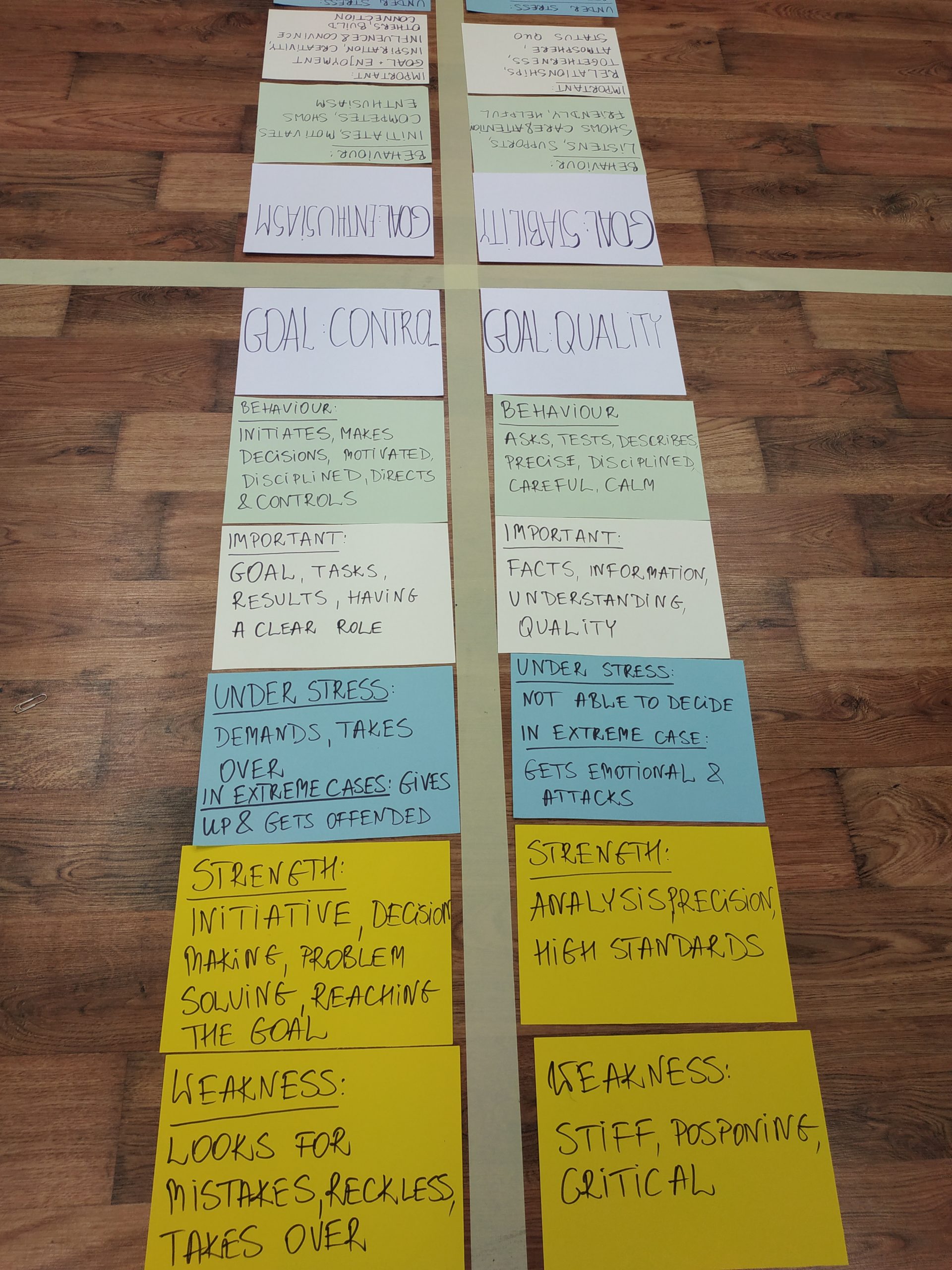
Photo by Monika Grzesiak-Chmura
Following your nature and innate resources is recognizing your own foundation on which you can erect a real building. Your life, your career, your relationship with other people.
Who are you closer to?
Which move can you make constantly?
Which move bothers you after a few seconds?
The answer is hidden in the body and in radical honesty with each other. Following your nature and innate resources is like recognizing your own foundation on which you can erect a real building. Your life, your career, your relationship with other people.
We added knowledge to the exercise in the form of worksheets informing about the resources of a given style, as well as about who with whom the easiest and most effective relationships can be established.
Knowledge-based exercise can be done in several ways. The self-diagnosis stage can be introduced through characteristic words and gestures performed by trainers. By identifying with one of the styles arranged in this way you can find yourself among other people representing a similar style of communication. By listening to others, we can find ourselves, our resources, but also think about how much we accept our way of life.
The point is for the head and analysis to be included at the very end of the process.
We give priority in this exercise to intuition, body and emotions. They show the truth about who we are. The intellect will always come, but the later we give it a place, the more likely the solutions will be sincere and simple.
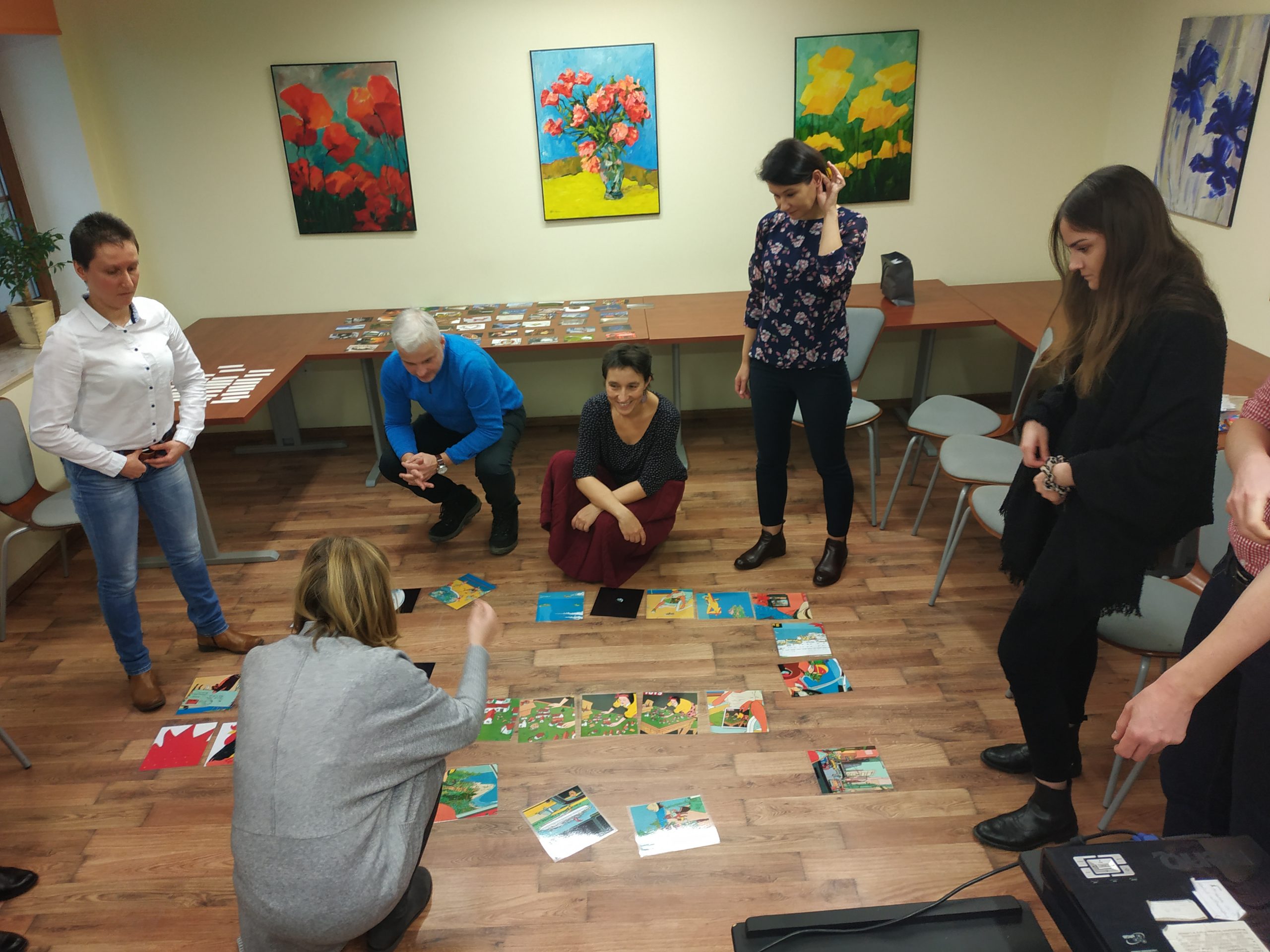
Photo by Monika Grzesiak-Chmura
Practicing with puzzles as a metaphor for communication between different group members is always a positive experience. Who initiates the task? Who keeps motivation high? Who is the most persistent? Who is withdrawing quickly?
3. GROUP as PUZZLE.
One of the exercises was dedicated to group communication. Exercise with puzzles as a metaphor for communication between different group members is always a positive experience. Who initiates the task? Who maintains enthusiasm? Who is the most persistent? Who is withdrawing quickly?
The act of placing a puzzle without the possibility of using verbal communication quickly shows our communication skills. Thus, it gives us experience of building relationships.
What is difficult in such tasks?
Weariness.
No overall view.
Too huge initiative of part of the group.
Not enough activity of individual participants.
As long as the group is in balance, everything works together. If this is not the case, you must see the cause of the conflict and re-establish the rules for cooperation. This often happens in a group process, where the initial principles of cooperation may be inadequate and the principles need to be verified, discussed and redefined.
This exercise teaches that if we don’t care about ourselves, we will stay in the background or in the shade. We will not use our resources and we may never reach the place which we define as success.
Therefore, a clear and open expression of needs is always an introduction to self-observation and being heard by others. When I know what I need, I can look for a place where I can satisfy my need without expecting someone standing next to me to do so.
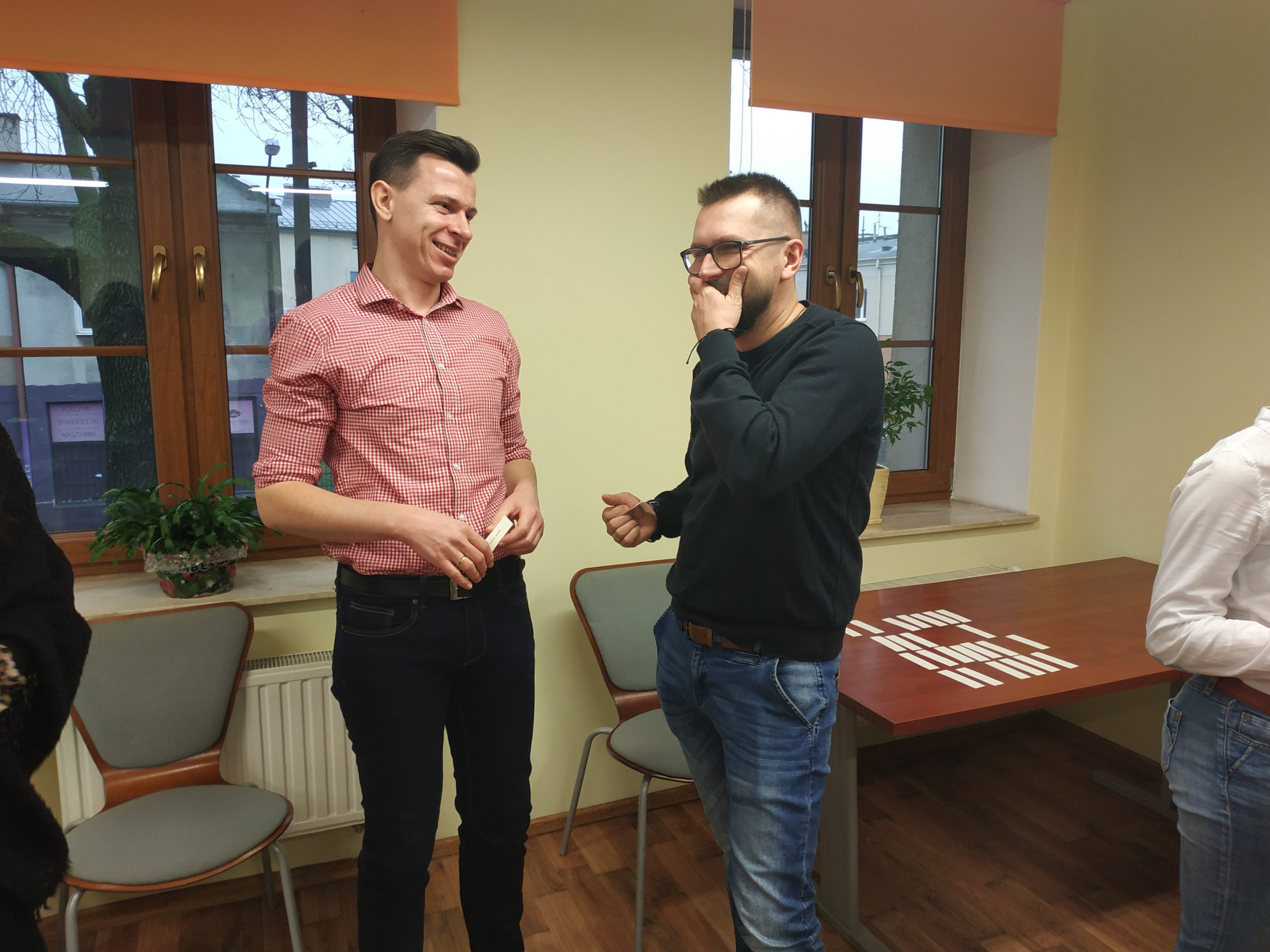
Photo by Monika Grzesiak-Chmura
DON’T BE A CASE. When I know my resources, I can multiply them. When I am unaware of my own burdens, I stop from growing not only myself, but also the people around me.
4. DON’T BE A CASE.
As long as I agree to ignorance about myself, to unconscious movements in my life, I can’t count on success. We all know that. Self-awareness is the first step to climbing for more something more than an average, casual life.
The final exercise was to reveal to the group your first association, image, and metaphor about yourself.
It turned out that the judgement, which was a barrier at the beginning, dissolved among the tasks of the day. Regardless of who we are, we are the potential to work in a group.
When I know my resources, I can multiply them.
When I am unaware of my own burdens, I stop not only myself, but also the people around me from growing.
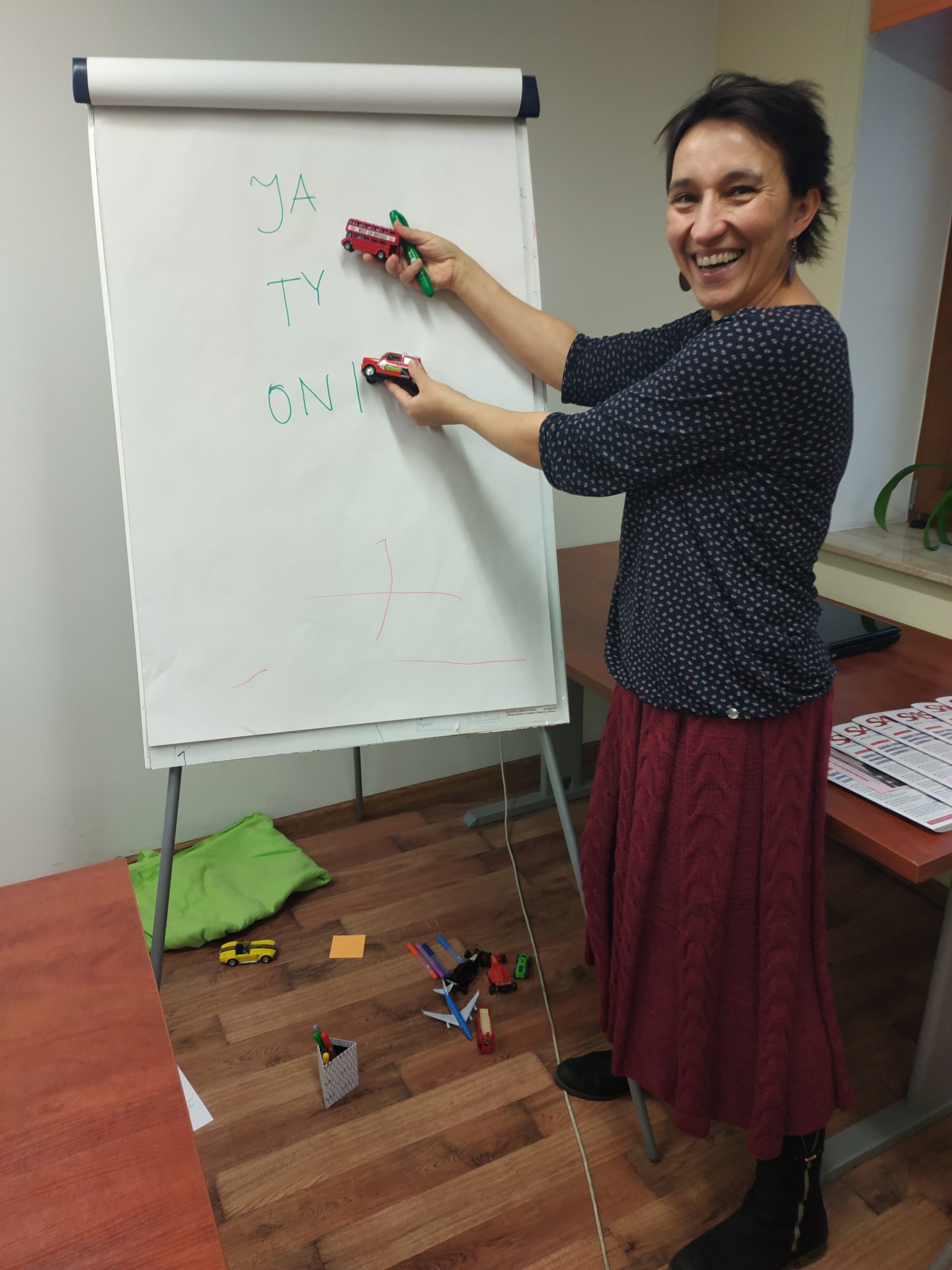
Photo by Monika Grzesiak-Chmura
The one who knows what I need and where I’m going is not a guru or someone better or a trainer. The one knows what I need and where I’m going, is only me.
5. WHAT IS THE GOAL OF SELF-DEVELOPMENT?
The conclusion that surprised us absolutely was very simple.
The goal of self-development is not becoming better. Can I be better than myself?
The goal of development is to recognize that the composition of my intuition, personality and the way I perceive the world is complete.
Getting to know yourself is like learning to drive, everyone is the driver for themselves.
The one who knows what I need and where I’m heading to is not a guru or someone better or a trainer.
The one who knows what I need and where I’m going is only me.
This training is the result of ELEVATE project, implemented by Development Support Foundation Innovator.
Project is co-financed by the European Union under Erasmus + Programme. (KA1 – Learning mobility of individuals, Mobility of adult education staff, Agreement no. 2018-1-PL01-KA104-049658).
This project has been funded with support from the European Commission. This publication reflects the views only of the author, and the Commission cannot be held responsible for any use which may be made of the information contained therein.
License by CC BY-SA
BLOG Development Support Foundation Innovator is licensed under a Creative Commons Attribution-ShareAlike 4.0 License. We kindly ask you to quote the author of the entry explicitly and the source: “The text is from the blog of the Development Support Foundation Innovator and is located at [link to the relevant entry] Author of the text: [name surname]”.
The CC-BY-SA license is excluded from the logo of the Foundation, to which all rights are reserved.